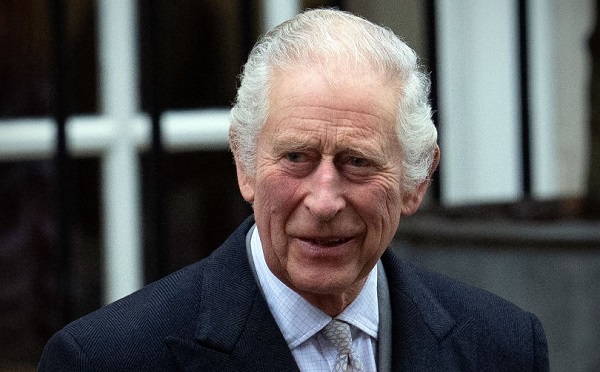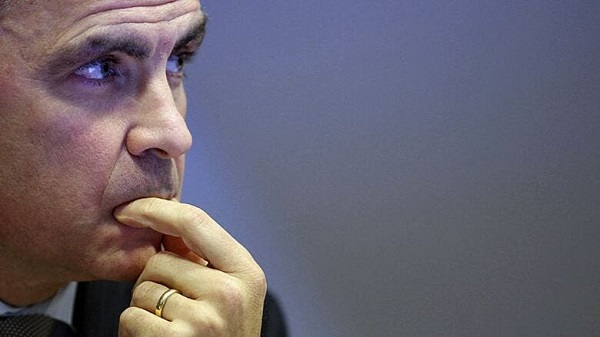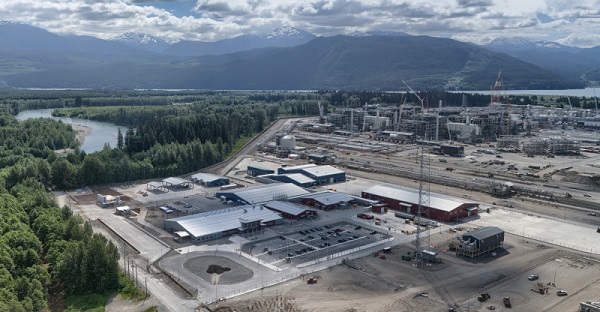Energy
King Charles gives globalist throne speech in Canadian Parliament aligned with Carney’s goals

From LifeSiteNews
The British monarch’s address included ‘green’ energy and indigenous reconciliation references that propped up Prime Minister Mark Carney’s recent election promises.
King Charles III on Tuesday delivered the throne speech on behalf and request of Prime Minister Mark Carney’s Liberal government in a globalist- themed address that contained references to “green” energy as well as Indigenous reconciliation and “climate change.”
Charles’ speech in Canada’s Senate was more or less a regurgitation of Carney’s election promises, but he opened with an Indigenous land acknowledgment.
“It is my great hope that in each of your communities, and collectively as a country, a path is found toward truth and reconciliation, in both word and deed,” he said.
“I’ve always had the greatest admiration for Canada’s unique identity, which is recognized across the world for bravery and sacrifice in defence of national values, and for the diversity and kindness of the native First Nations and Métis peoples.”
The King talked about Canada’s sovereignty as well as noting that the system of “open global trade that has helped to deliver prosperity for Canadians for decades is changing. Canada’s relationships with partners are also changing.”
“The True North is indeed strong and free,” he stated.
Charles then noted Carney’s planned green energy policies, saying these would “make it possible for a new era of growth and help Canada’s ability to overcome the challenge of trade wars stronger than ever.”
“That will allow it to become a superpower when it comes to green energy,” he noted.
Charles noted how Carney’s plans for Canada will “build an industrial strategy that will make Canada more competitive on the international stage while at the same time fighting climate change.”
Charles also talked about Liberal plans to go after legal firearms owners as well as more Indigenous reconciliation.
Charles came to Canada at the direct request of Carney, who asked him to open the nation’s 45th session of Parliament, something a monarch has not done since October 1977 when Elizabeth II read the throne speech.
Normally, the King’s representative for Canada, the governor-general, reads the throne speech.
Carney’s globalist views seem to align closely with those of Charles. Both men have ties to the World Economic Forum, with Charles serving as one of the co-hosts for the group’s now-infamous “Great Reset” initiative launch, which seeks to usher in an economic revolution in which citizens will “own nothing.” Carney has also touted an economic “revolution” based on carbon net-zero emissions, a movement supported by the WEF.
Shortly after winning the April 28 federal election, Carney seemed to repeat this economic revolution goal but with more subdued language, promising to usher in a “new economy” in Canada and to “deepen” the nation’s ties with the world.
Energy
Activists using the courts in attempt to hijack energy policy

2016 image provided by Misti Leon, left, sits with her mom, Juliana Leon. Misti Leon is suing several oil and gas companies in one of the first wrongful-death claims in the U.S. seeking to hold the fossil fuel industry accountable for its role in the changing climate.

From the Daily Caller News Foundation
By Jason Isaac
They twist yesterday’s weather into tomorrow’s crisis, peddle apocalyptic forecasts that fizzle, and swap “global warming” for “climate change” whenever the narrative demands. They sound the alarm on a so-called climate emergency — again and again.
Now, the Left has plunged to a new low: weaponizing the courts with a lawsuit in Washington State that marks a brazen, desperate escalation. This isn’t just legal maneuvering—it’s the exploitation of personal tragedy in service of an unpopular anti-energy climate crusade.
Consider the case at the center of a new legal circus: Juliana Leon, 65, tragically died of hyperthermia during a 100-mile drive in a car with broken air conditioning, as a brutal heat wave pushed temperatures to 108 degrees Fahrenheit.
Dear Readers:
As a nonprofit, we are dependent on the generosity of our readers.
Please consider making a small donation of any amount here.
Thank you!
The lawsuit leaps from this heartbreaking event to a sweeping claim: that a single hot day is the direct result of global warming.
The lawsuit preposterously links a very specific hot weather event to theorized global warming. Buckle up—their logic is about to take a wild ride.
Some activist scientists have further speculated that what may be a gradual long-term trend of slight warming thought to be both cyclical and natural, might be possibly exacerbated by the release of greenhouse gases. Some of these releases are the result of volcanic activity while some comes from human activities, including the burning of oil, natural gas and coal.
Grabbing onto that last, unproven thread, the plaintiffs have zeroed in on a handful of energy giants—BP, Chevron, Conoco, Exxon, Phillips 66, Shell, and the Olympic Pipe Company—accusing them of causing Leon’s death. Apparently, these few companies are to blame for the entire planet’s climate, while other oil giants, coal companies, and the billions of consumers who actually use these fuels get a free pass.
Meanwhile, “climate journalists” in the legacy media have ignored key details that will surely surface in court. Leon made her journey in a car with no air conditioning, despite forecasts warning of dangerous heat. She was returning from a doctor’s visit, having just been cleared to eat solid food after recent bariatric surgery.
But let’s be clear: this lawsuit isn’t about truth, justice, or even common sense. It’s lawfare, plain and simple.
Environmental extremists are using the courts to hijack national energy policy, aiming to force through a radical agenda they could never pass in Congress. A courtroom win would mean higher energy prices for everyone, the potential bankruptcy of energy companies, or their takeover by the so-called green industrial complex. For the trial lawyers, these cases are gold mines, with contingency fees that could reach hundreds of millions.
This particular lawsuit was reportedly pitched to Leon’s daughter by the left-leaning Center for Climate Integrity, a group bankrolled by billionaire British national Christopher Hohn through his Children’s Investment Fund Foundation and by the Rockefeller Foundation. It’s yet another meritless claim in the endless list of climate lawsuits that are increasingly being tossed out of courts across the country.
Earlier this year, a Pennsylvania judge threw out a climate nuisance suit against oil producers brought by Bucks County, citing lack of jurisdiction. In New York, Supreme Court Justice Anar Patel dismissed a massive climate lawsuit by New York City, pointing out the city couldn’t claim both public awareness and deception by oil companies in the same breath.
But the Washington State case goes even further, threatening to set a dangerous precedent: if it moves forward, energy companies could face limitless liability for any weather-related injury. Worse, it would give unwarranted credibility to the idea — floated by a leftwing activist before the U.S. Senate — that energy executives could be prosecuted for homicide, a notion that Republican Texas Sen. Ted Cruz rightly called “moonbeam, wacky theory.”
The courts must keep rejecting these absurd lawfare stunts. More importantly, America’s energy policy should be set by Congress—elected and accountable—not by a single judge in a municipal courtroom.
Jason Isaac is the founder and CEO of the American Energy Institute. He previously served four terms in the Texas House of Representatives.
Alberta
Temporary Alberta grid limit unlikely to dampen data centre investment, analyst says
From the Canadian Energy Centre
By Cody Ciona
‘Alberta has never seen this level and volume of load connection requests’
Billions of investment in new data centres is still expected in Alberta despite the province’s electric system operator placing a temporary limit on new large-load grid connections, said Carson Kearl, lead data centre analyst for Enverus Intelligence Research.
Kearl cited NVIDIA CEO Jensen Huang’s estimate from earlier this year that building a one-gigawatt data centre costs between US$60 billion and US$80 billion.
That implies the Alberta Electric System Operator (AESO)’s 1.2 gigawatt temporary limit would still allow for up to C$130 billion of investment.
“It’s got the potential to be extremely impactful to the Alberta power sector and economy,” Kearl said.
Importantly, data centre operators can potentially get around the temporary limit by ‘bringing their own power’ rather than drawing electricity from the existing grid.
In Alberta’s deregulated electricity market – the only one in Canada – large energy consumers like data centres can build the power supply they need by entering project agreements directly with electricity producers.
According to the AESO, there are 30 proposed data centre projects across the province.
The total requested power load for these projects is more than 16 gigawatts, roughly four gigawatts more than Alberta’s demand record in January 2024 during a severe cold snap.
For comparison, Edmonton’s load is around 1.4 gigawatts, the AESO said.
“Alberta has never seen this level and volume of load connection requests,” CEO Aaron Engen said in a statement.
“Because connecting all large loads seeking access would impair grid reliability, we established a limit that preserves system integrity while enabling timely data centre development in Alberta.”
As data centre projects come to the province, so do jobs and other economic benefits.
“You have all of the construction staff associated; electricians, engineers, plumbers, and HVAC people for all the cooling tech that are continuously working on a multi-year time horizon. In the construction phase there’s a lot of spend, and that is just generally good for the ecosystem,” said Kearl.
Investment in local power infrastructure also has long-term job implications for maintenance and upgrades, he said.
“Alberta is a really exciting place when it comes to building data centers,” said Beacon AI CEO Josh Schertzer on a recent ARC Energy Ideas podcast.
“It has really great access to natural gas, it does have some excess grid capacity that can be used in the short term, it’s got a great workforce, and it’s very business-friendly.”
The unaltered reproduction of this content is free of charge with attribution to the Canadian Energy Centre.
-

 Business1 day ago
Business1 day agoCarney government should apply lessons from 1990s in spending review
-

 Business2 days ago
Business2 days agoTrump to impose 30% tariff on EU, Mexico
-

 Entertainment1 day ago
Entertainment1 day agoStudy finds 99% of late-night TV guests in 2025 have been liberal
-

 illegal immigration2 days ago
illegal immigration2 days agoICE raids California pot farm, uncovers illegal aliens and child labor
-

 Business7 hours ago
Business7 hours agoMark Carney’s Fiscal Fantasy Will Bankrupt Canada
-

 Frontier Centre for Public Policy20 hours ago
Frontier Centre for Public Policy20 hours agoCanada’s New Border Bill Spies On You, Not The Bad Guys
-

 Energy2 days ago
Energy2 days agoLNG Export Marks Beginning Of Canadian Energy Independence
-

 Uncategorized20 hours ago
Uncategorized20 hours agoCNN’s Shock Climate Polling Data Reinforces Trump’s Energy Agenda



